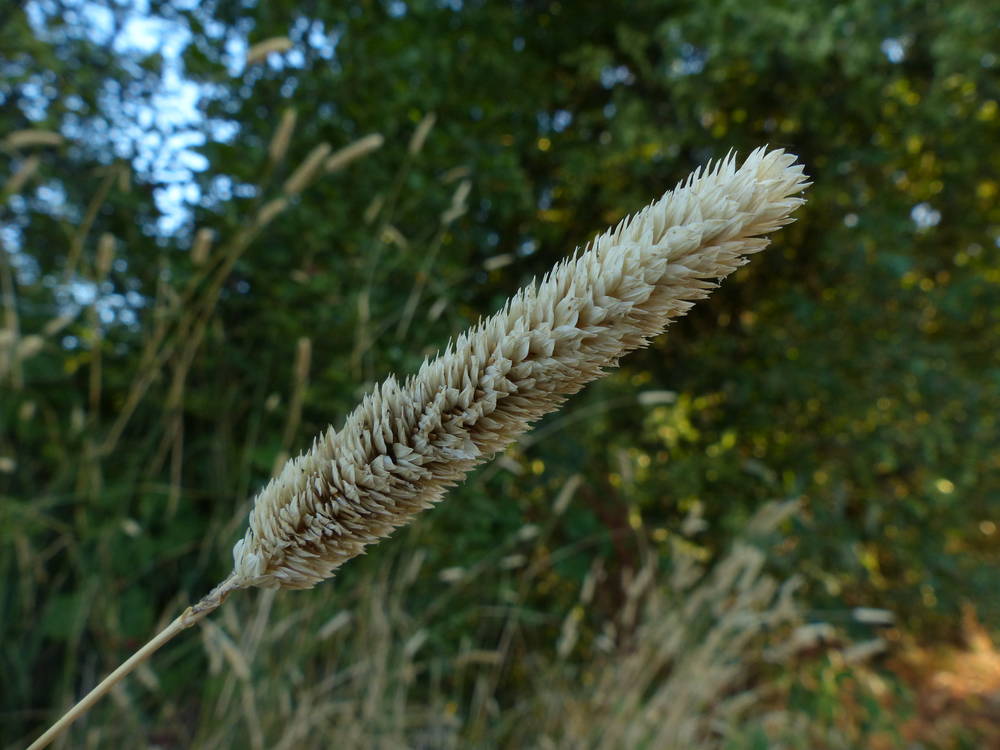Phalaris lemmonii
Phalaris
canarygrass
sometimes swollen at the base.
more or less evenly distributed;
sheaths open except occasionally at base; uppermost sheaths sometimes somewhat inflated;
ligules truncate to acuminate; hyaline;
blades flat, sometimes revolute.
dense terminal panicles; ovoid to cylindric, sometimes interrupted; the spikelets borne singly or in clusters; if in clusters then the spikelets of 2 forms; the lower staminate or sterile and the upper bisexual or pistillate;
disarticulation below the sterile florets in species with solitary spikelets; at the base of the cluster or sometimes below the bisexual or pistillate spikelets in species with clustered spikelets.
laterally compressed with 1–3(4) florets; the terminal floret sexual; lower florets; if present, sterile.
subequal; longer than the florets, 1–5-veined, keeled; the keels often winged.
sterile florets reduced to tiny knobs, linear; bristle-like structures or lanceolate lemmas to 75% as long as the bisexual florets; terminal florets bisexual or in spikelet clusters sometimes staminate or sterile).
of terminal florets leathery to hard; acute to acuminate or beaked; awnless; shiny, glabrous or hairy, inconspicuously 5-veined.
similar in texture to the lemmas, enclosed by the lemmas at maturity, 1-veined.
3.
Phalaris lemmonii
Phalaris
Temperate regions. 22 species; 6 species treated in Flora.
The sterile florets in the spikelet of many Phalaris species are often misinterpreted as tufts of hairs, but they are actually small, linear, hairy, vestigial lemmas. Two annual Phalaris were introduced to western Oregon but have not been found in more than 60 years. Phalaris caroliniana has glume wing margins entire and 0.8–1.5 mm wide, two sterile florets 1.5–2.5 mm, and a somewhat beaked fertile floret. Phalaris minor has glume wing margins often irregularly toothed or crenate and 0.3–0.5 mm wide and one sterile floret 0.7–1.8 mm.
Barbara Wilson, Richard Brainerd, Nick Otting
- Local floras:
CA,
OR,
WA
- Local Web sites:
CalFlora,
CalPhotos,
Flora NW,
PNW Herbaria
WildflowerSearch
iNaturalist (observations)
USDA Plants Database
- LBJ Wildflower Center
- SEINet
- Plants of the World Online
- Encyclopedia of Life
- Wikipedia
- Google Image Search


